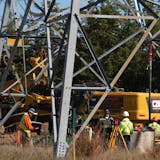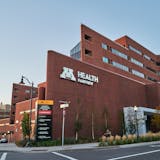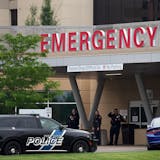The proliferating bike lanes of Minneapolis have been maligned in recent years by grumpy property taxpayers, impatient motorists and conservative ideologues alleging a war on cars.
But something amazing is happening on the streets of Minneapolis.
The number of cyclists injured in bike-motor vehicle crashes has fallen sharply. And that's cause for celebrating a municipal investment that's paid off.
Minneapolis averaged 350 injured cyclists a year in the mid- to late-1990s. But the injury toll has fallen nearly 39% to an average of 214 annually between 2016 and 2019. In fact, 2018 was the first year the city has recorded fewer than 200 cycling injuries in 30 years of record-keeping.
That's despite fourfold growth in the number of commuting Minneapolis cyclists measured by the U.S. Census. That means that the injury rate per mile cycled has plunged even more.
Ethan Fawley coordinates the city's Vision Zero program, which has set a goal of ending traffic deaths and injuries for all street users. Fawley attributes the improvement to two factors. One is that the increased number of cyclists means that motorists are more aware of them. Given that the biggest cause of bike-motor vehicle crashes is failure to yield by one party, it's important that both keep vigilant.
But the drop in injuries also correlates with the city's growth in bikeways, Fawley has found. They range from low-traffic, lower-speed bike boulevards shared with motorists to off-street trails such as the Midtown Greenway to striped bike lanes to protected lanes denoted by plastic bollards and increasingly by concrete curbs. The drop-off in cyclist injuries has been sharpest since the city committed to those protected lanes.
Of course, bike injury statistics only include injuries that warrant a report to law enforcement. I've gotten my share of scrapes and bruises as a cyclist struck three times by vehicles that failed to yield, and shrugged them off rather than filing a report. In doing so, I realize that I've made the occasional boneheaded move both as a cyclist and a driver. But those experiences augment my appreciation for protected lanes.


